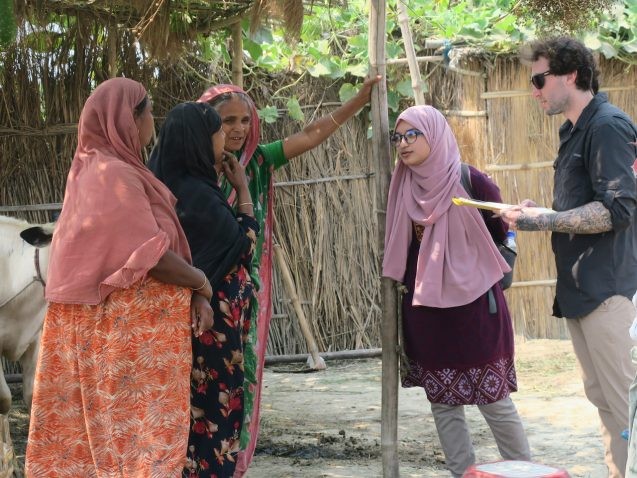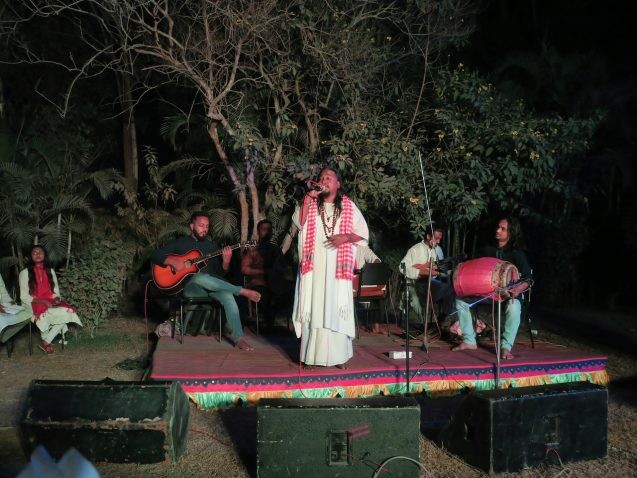Taking My Class to Bangladesh
My undergraduate Sustainable Development course is in Bangladesh for a Spring Break trip to see what they have been learning about. We will be touring the country by bus and boat to learn about the environment and people of Bangladesh.
This semester I am teaching a course about Bangladesh in Columbia’s undergraduate Sustainable Development program. I am here in Bangladesh with my 10 students and TA for a spring break trip to see what they have been learning about. We are accompanied by two Dhaka University professors and eight students. Carol Wilson from Louisiana State University is also traveling with us.
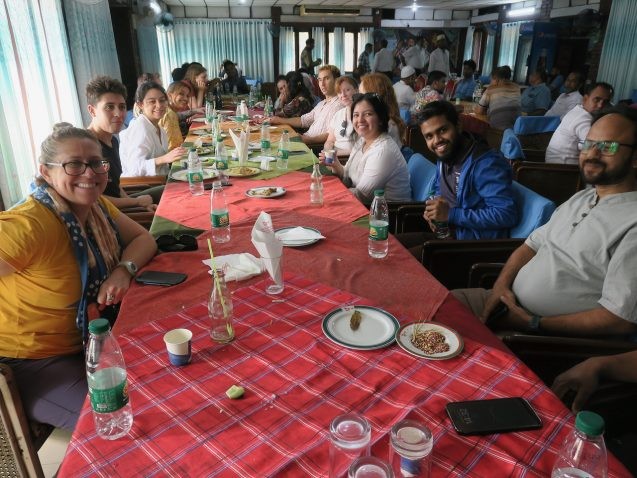
The students have been learning about the hazards facing the people living on the world’s largest delta. Bangladesh is the size of Iowa, but has half the population of the U.S. The country has been rising from the poverty and destruction of the 1971 War of Independence to becoming a lower middle income country. This improvement has been going on despite the problems of widespread flooding, tropical cyclones, coastal and river erosion, avulsions (wholesale shifting river courses), arsenic in the groundwater, land subsidence augmenting sea level rise, and earthquakes. Classroom learning cannot compare to seeing the region yourself accompanied by Bangladeshis.
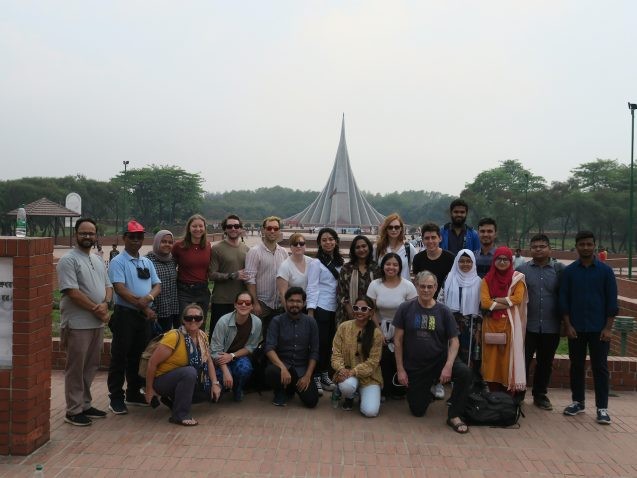
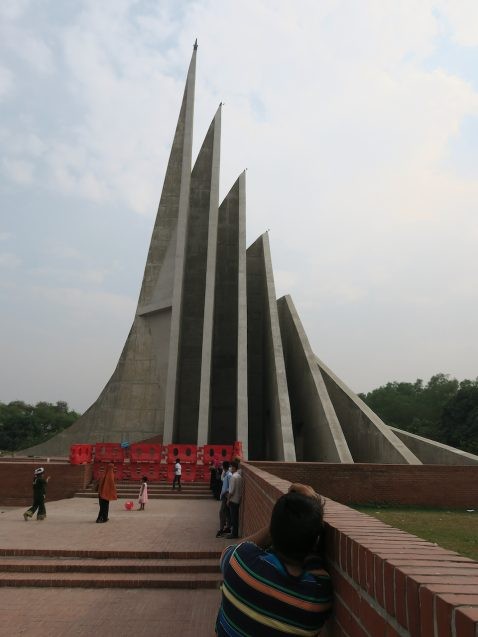
We left New York on Thursday evening, March 9, and arrived in the capital, Dhaka, on the morning of March 11 after over 26 hours of traveling. The Dhaka University students met us at the airport with our 30-seat bus and luggage truck, and we headed out to Savar to see the National Martyr’s Memorial. After our first Bangladeshi meal across the street, we visited the monument built at one of the killing fields outside of Dhaka as Bangladesh secured independence from Pakistan in a bloody nine-month war that saw 3 million people killed. The 150-foot-high monument consists of seven triangles ascending in height, representing the seven stages of the independence movement. It is surrounded by a reflecting pool, and grounds that includes mass graves for those killed here during the war.
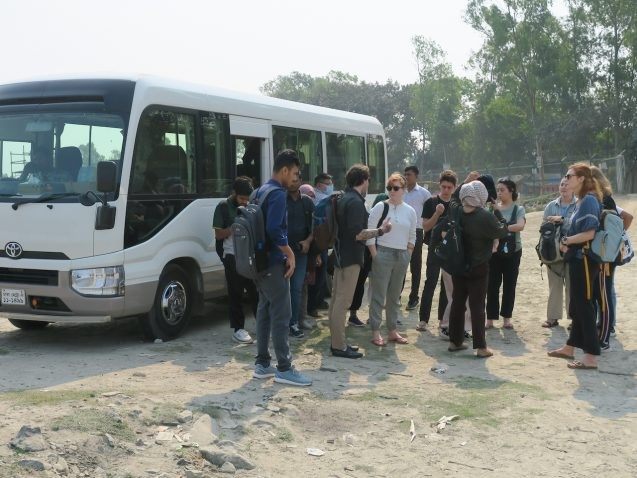
We then continued on to the Elenga Resort near the Jamuna River, as the Brahmaputra River is called here. After an early night for the exhausted travelers, we headed out to the river the next morning. The Jamuna is a braided river with many crisscrossing channels and sandy islands called chars. Over 700,000 people live on the chars. We sailed under the Bangabandu Bridge that crosses the river to get to some villages on chars that I had picked out. We couldn’t get to the channel that I wanted because of the new railway bridge construction, and another was too silted up for us the pass. We would have to stop farther south than I planned and walk.
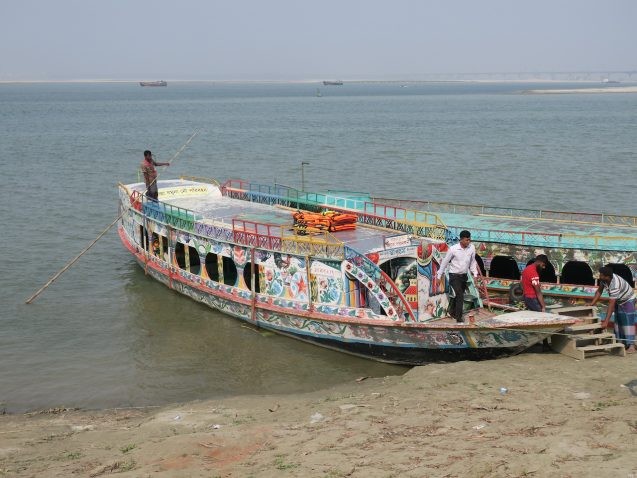
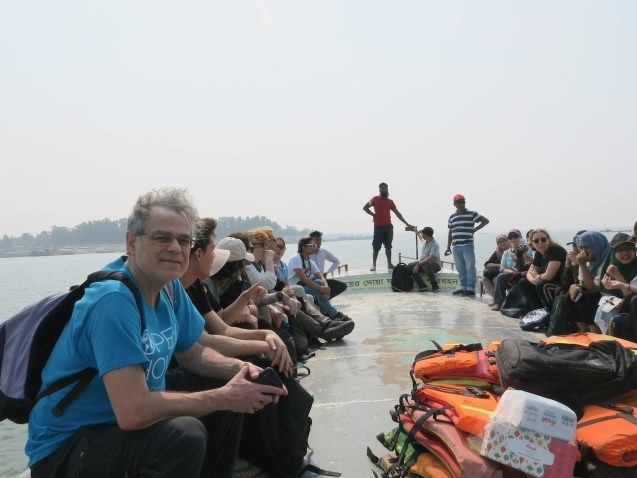
It was about a mile walk to the closest village from where we stopped. Along the way, we passed a group of people threshing wheat. The machine separated the grain from the stalks and then poured out the grain and let the wind separate the wheat from the chaff. Some of my students lagged behind with Dhaka University students as translators. My students have three group projects. The group that stayed behind is interviewing people about migration and climate change, supervised by a professor from the Czech Republic. Another group is working on improving index flood insurance using satellite images. They are led by a graduate student from the University of Arizona. The last group is investigating the reasons for the increasing tree cover in part of Bangladesh that we will be visiting later. They will be talking to people later in the trip. Chris Small, another Lamont Research Professor that I have been working with for years, is leading that group.
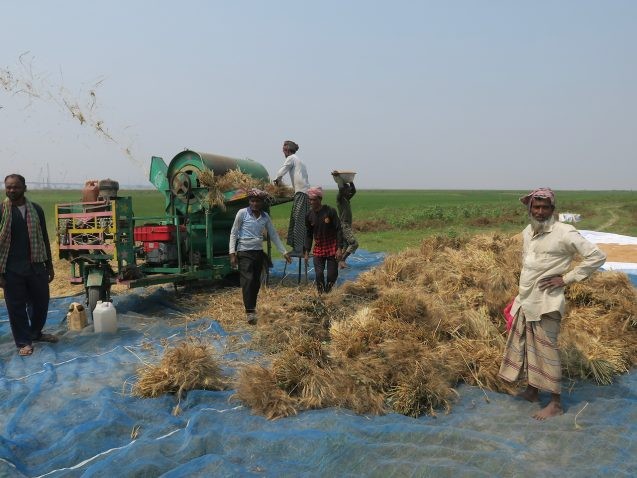
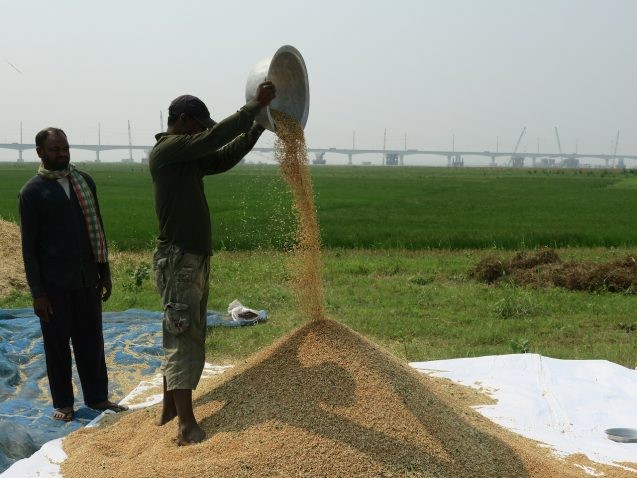
The villagers welcomed us into their homes. One woman we spoke to was married here in 1991 and lived on this char until it eroded away. Her family moved to the mainland and owns property there. About four or five years ago, the char grew back. Now she moves here for the winter season to farm. For the monsoon, when the water rises to waist deep, they shift back to the mainland along with the cattle and other possessions. The chars are a beautiful, less densely populated place and clearly she is very attached to her land here. The future will tell if he land will continue to gain in elevation such that she can move back permanently or will continue to migrate between her two homes.

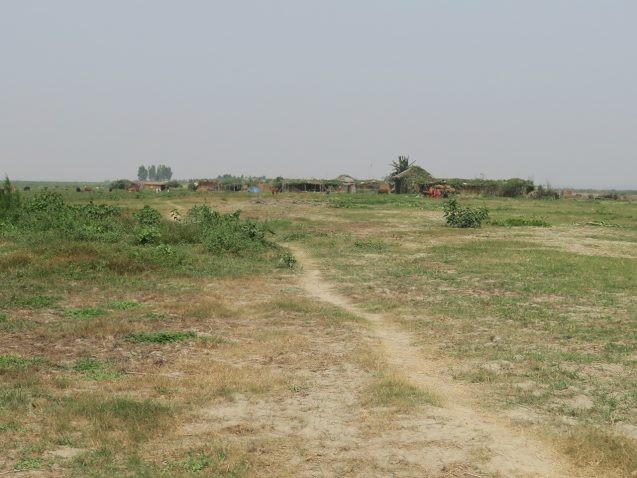
We heard similar stories from other people. When all the interviews were done, we walked back to the boat. We sailed south to where we could see some sedimentary structures in the eroding sediments along a different char. After we headed back to the hotel, some of the students went shopping in nearby Tangail. In the evening, we had a barbecue at the resort along with a concert of traditional Bangladeshi Baul music with five musicians and four alternating singers, two male and two female. The band consisted of a dholak drum, a bansuri wooden flute, a harmonium, a small stringed instrument similar to a ukulele, and a guitar. It was a great end to our first full day in Bangladesh.
